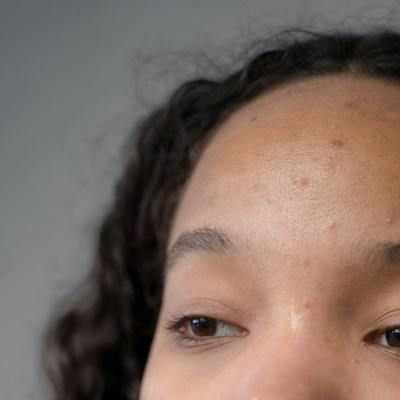Article
Oral Povorcitinib Significantly Improves Total, Facial Vitiligo in 24 Week Trial
Author(s):
New phase 2b findings support the oral JAK1 inhibitor's capability to improve repigmentation versus placebo.
Credit: Unsplash / Inna Kapturevska

An investigative oral JAK inhibitor has shown capability to repigment patients’ vitiligo skin for the first time in new phase 2b trial data.1
In outcomes presented during the late-breaking sessions at the American Academy of Dermatology (AAD) 2023 Annual Meeting in New Orleans last week, investigators reported that povorcitinib, a small-molecule selective JAK1 inhibitor in development as an oral medication by Incyte, was associated with statistically significantly improved total and facial Vitiligo Area Scoring Index (T-VASI; F-VASI) metrics versus placebo at 24 weeks.
Across the 3 different dosages, a notable proportion of treated patients with the pigmentation disease achieved ≥50% facial vitiligo clearance by 24 weeks.
Led by Amit G. Pandya, MD, adjunct professor in the department of dermatology at University of Texas Southwestern Medical Center, investigators sought to assess the efficacy and safety of povorcitinib on the basis of early-stage trials showing “potential activity in the treatment of nonsegmental vitiligo.”
The team randomized 171 adults with vitiligo to either once-daily oral povorcitinib doses of 15, 45, or 75 mg, or placebo, for 24 weeks. All patients were then administered 45 or 75 mg povorcitinib during a 28-week extension period. Eligible trial patients had nonsegmental vitiligo affecting ≥8% of their body surface area. The primary outcomes were T-VASI and F-VASI improvements versus placebo.
From baseline, investigators observed the following mean T-VASI percent changes with each treatment arm at 24 weeks:
- Povorcitinib 15 mg, -19.0%
- Povorcitinib 45 mg, -17.8%
- Povorcitinib 75 mg, -15.7%
- Placebo, 2.3 (P <.01)
Outcomes for mean F-VASI percent changes at 24 weeks were as follows:
- Povorcitinib 15 mg, -27.6%
- Povorcitinib 45 mg, -36.4%
- Povorcitinib 75 mg, -29.4%
- Placebo, -5.1% (P <.005)
Both primary efficacy end points were deemed statistically significant. Pandya and colleagues additionally observed 16.3%, 34.9%, and 23.8% of patients receiving each povorcitinib dose, respectively, achieved F-VASI 50 at 24 weeks—versus just 7.0% of placebo patients.
Investigators observed continued improvement in vitiligo area severity score improvement in treated patients through the 36-week extension period:
- Povorcitinib 15 mg to 75 mg (T-VASI, -30.5%; F-VASI, -41.5%)
- Povorcitinib 45 mg (T-VASI, -28.4%; F-VASI, -51.1%)
- Povorcitinib 75 mg (T-VASI, -28.8%; F-VASI, -54.3%)
- Placebo to povorcitinib 75 mg (T-VASI, -5.3%; F-VASI, -26.1%)
In the new extension treatment arms, 40.0%; 58.6%; 63.6%; and 30.3% achieved F-VASI 50, respectively, by 36 weeks.
The most common treatment-emergent adverse events observed at 24 weeks included COVID-19 (16.7%), headache (10.3%), fatigue (9.5%), increased blood creatine phosphokinase (7.9%) and acne—however none were serious in severity, and no new safety signals were observed after 24 weeks.
In a statement accompanying the new data, Pandya stressed the difficulty to manage vitiligo, which as of March 2023 has only 1 approved therapy—Incyte’s ruxolitinib cream (Opzelura)2—from the US Food and Drug Administration (FDA).
“As vitiligo can impact patients in different ways, I am encouraged by the continued focus on expanding medical treatment options, and I believe these data highlight the potential of this investigational oral treatment for patients with extensive nonsegmental vitiligo,” Pandya said.3
References
- Pandya AG, et al. Efficacy and Safety of Povorcitinib in Extensive Vitiligo: Results from a Phase 2, Placebo-Controlled, Dose Ranging Study. Paper presented at: American Academy of Dermatology 2023 Annual Meeting; March 17 – 21. New Orleans, LA. Accessed March 22, 2023.
- Butera A. FDA Approves Ruxolitinib Cream 1.5% for Nonsegmental Vitiligo. HCPLive. Published July 18, 2022. Accessed March 22, 2023. https://www.hcplive.com/view/fda-approves-ruxolitinib-cream-for-nonsegmental-vitiligo
- Incyte. Incyte Announces Data from Phase 2b Study Evaluating Povorcitinib (INCB54707) in Patients with Extensive Nonsegmental Vitiligo. News release. Published March 18, 2023. Accessed March 22, 2023. https://www.businesswire.com/news/home/20230318005041/en/Incyte-Announces-Data-from-Phase-2b-Study-Evaluating-Povorcitinib-INCB54707-in-Patients-with-Extensive-Nonsegmental-Vitiligo





